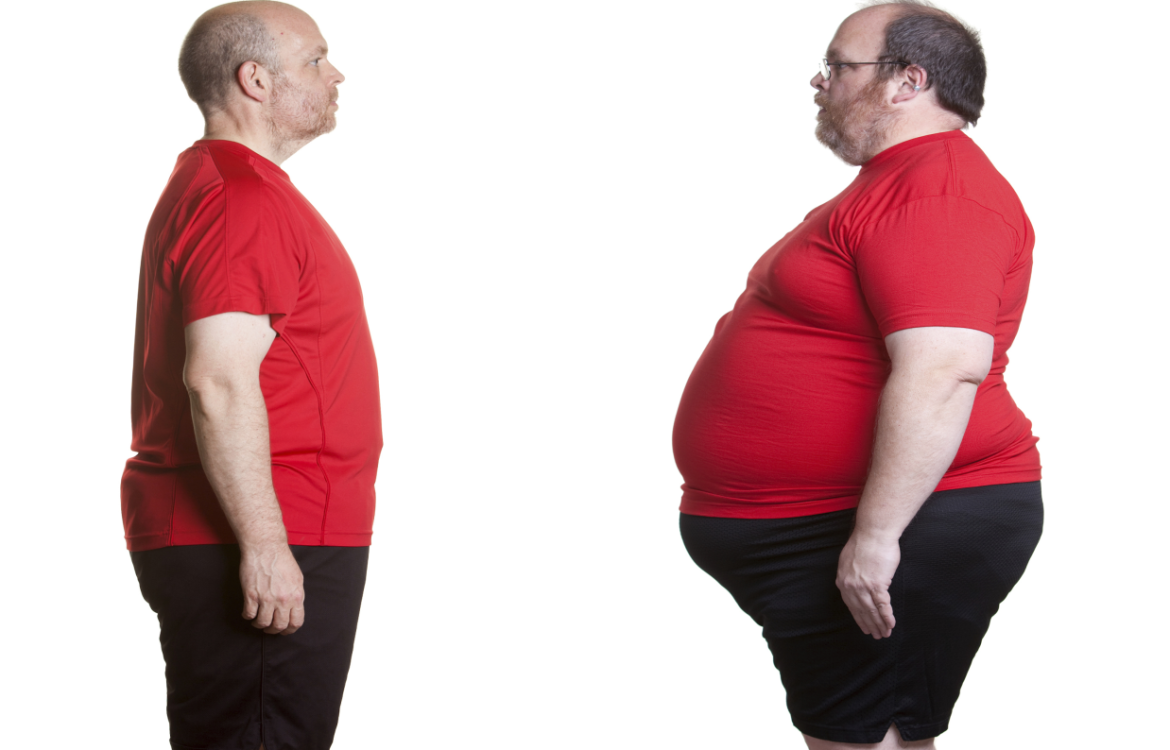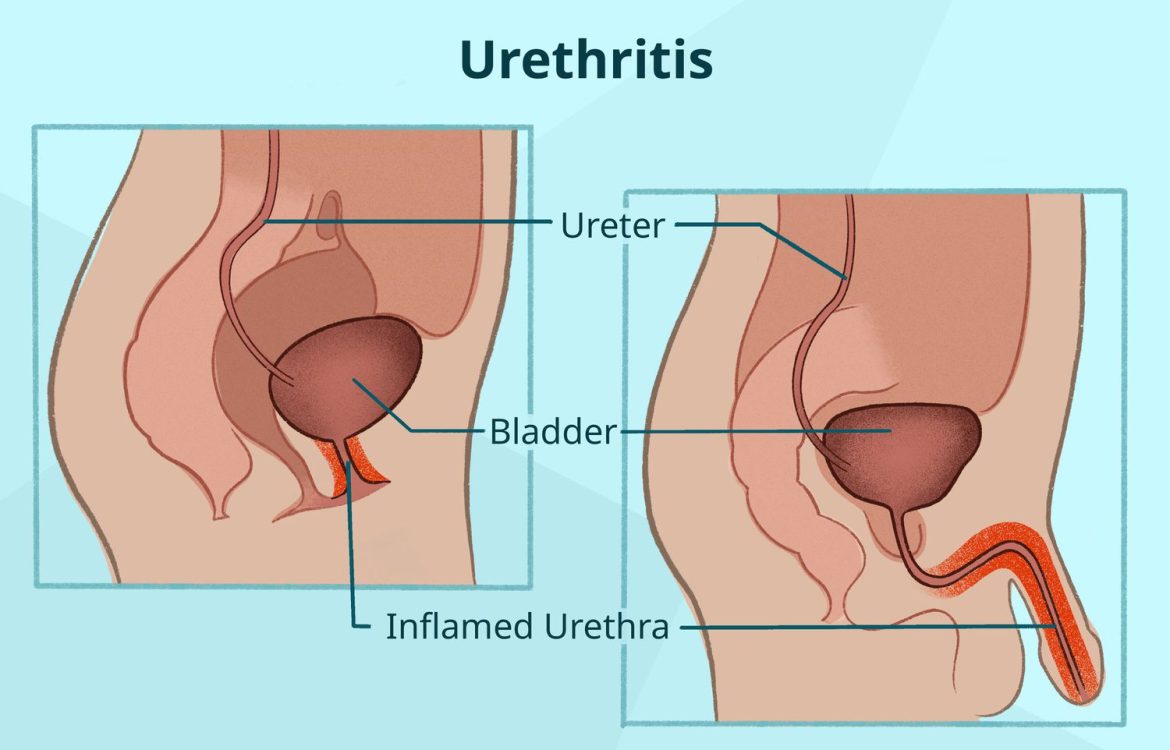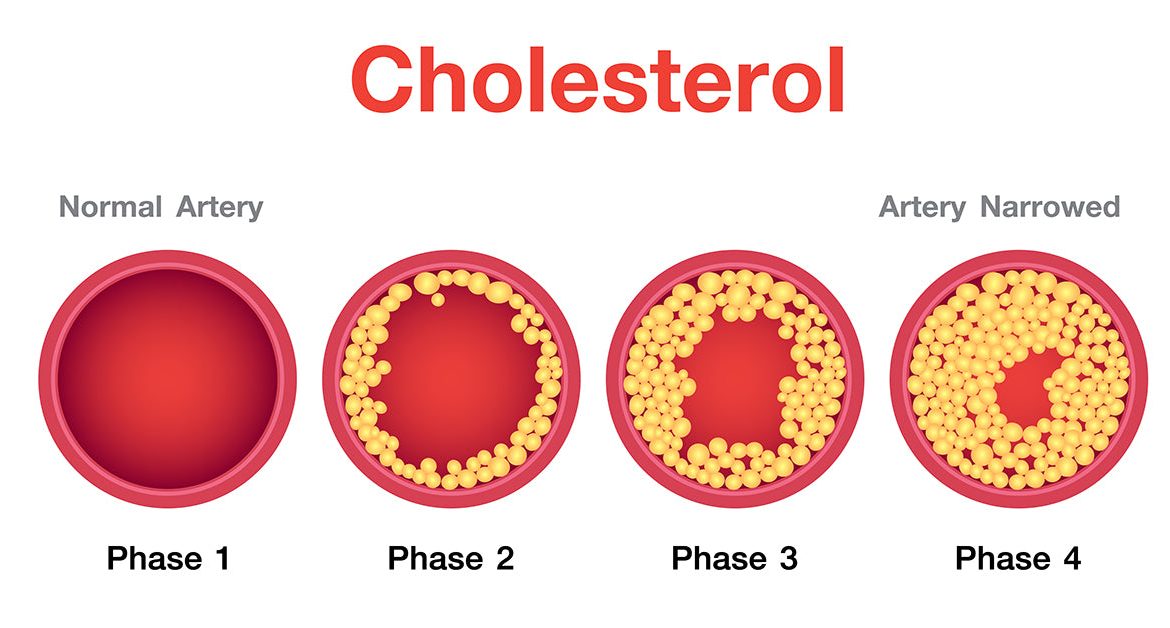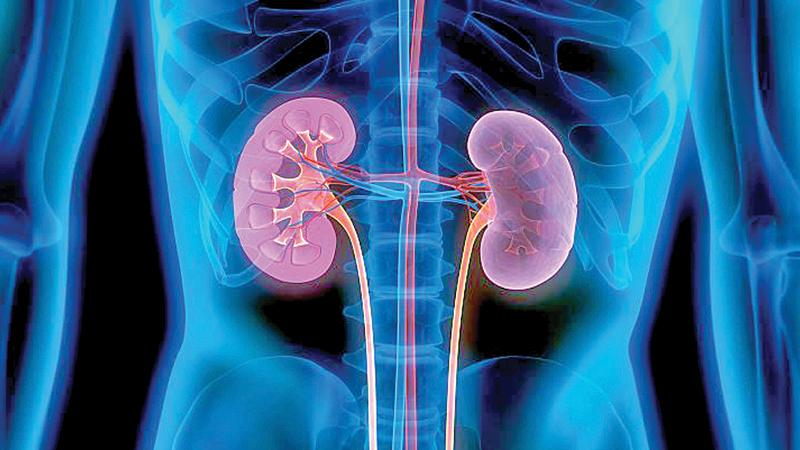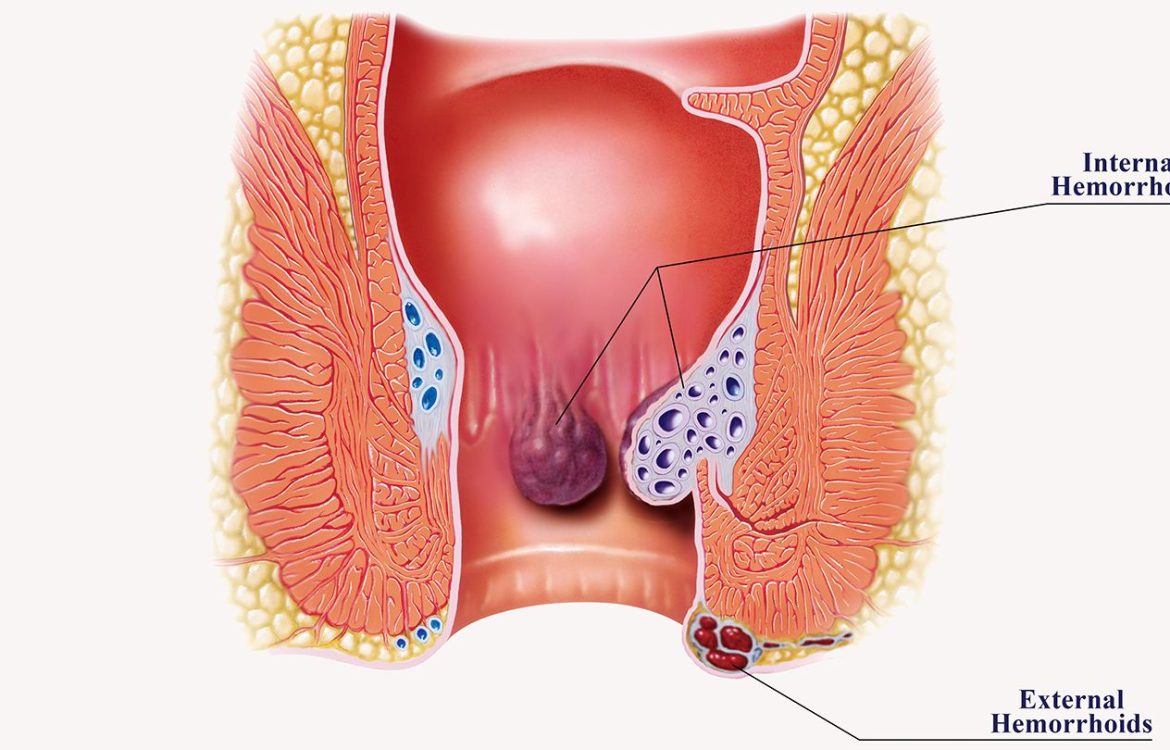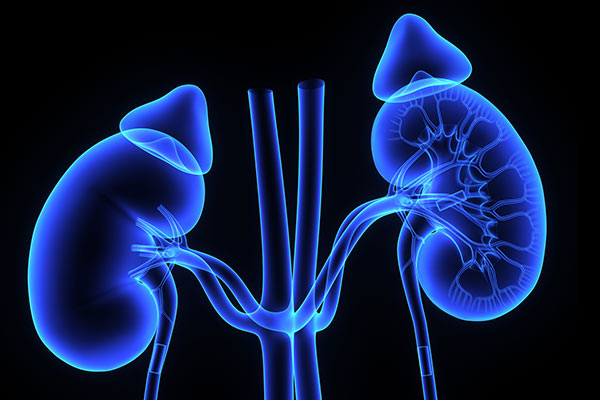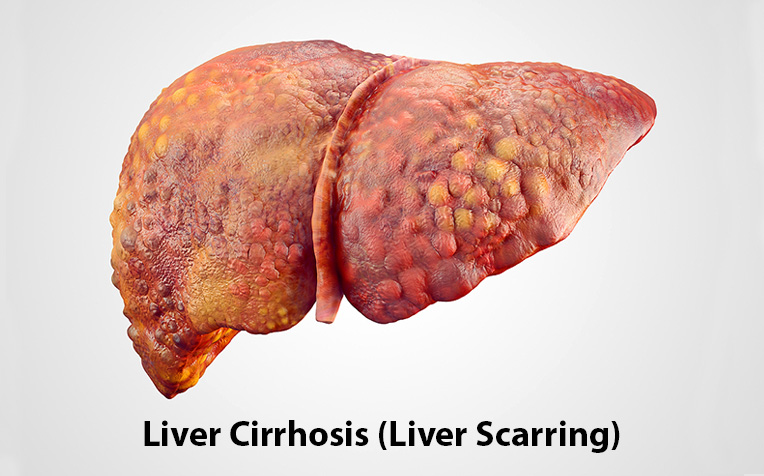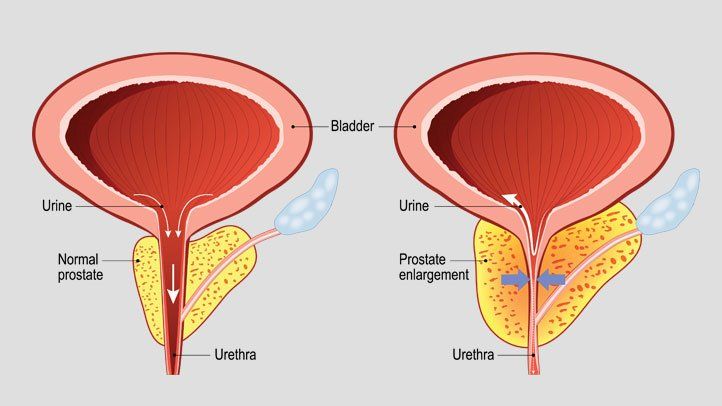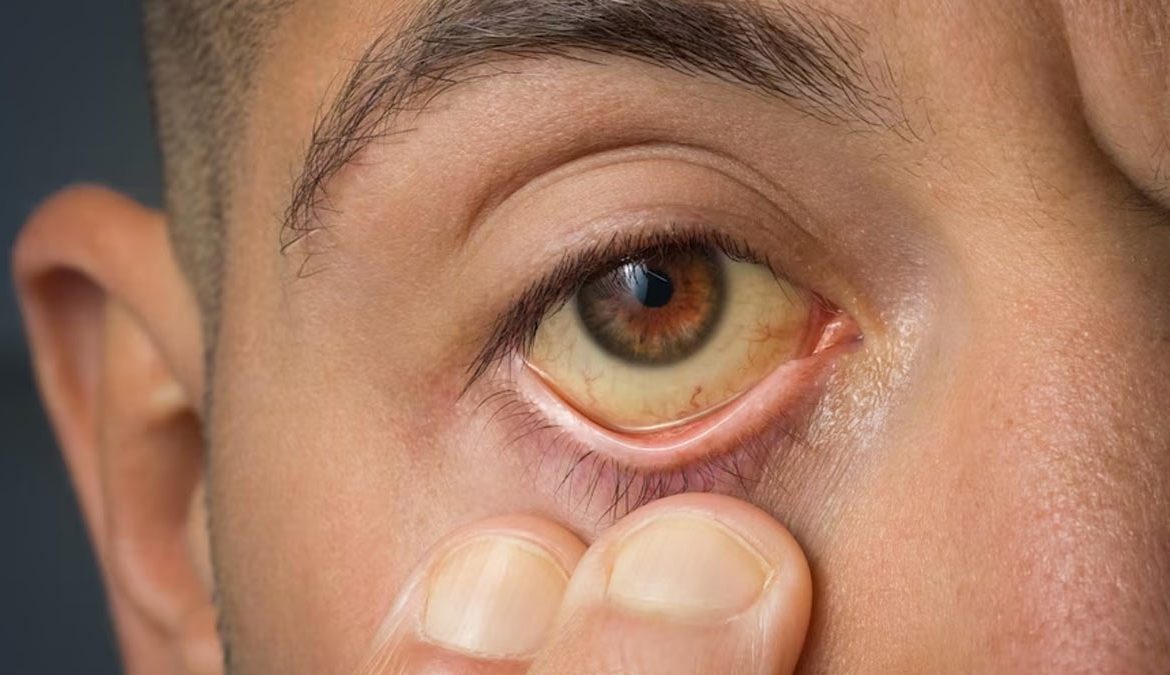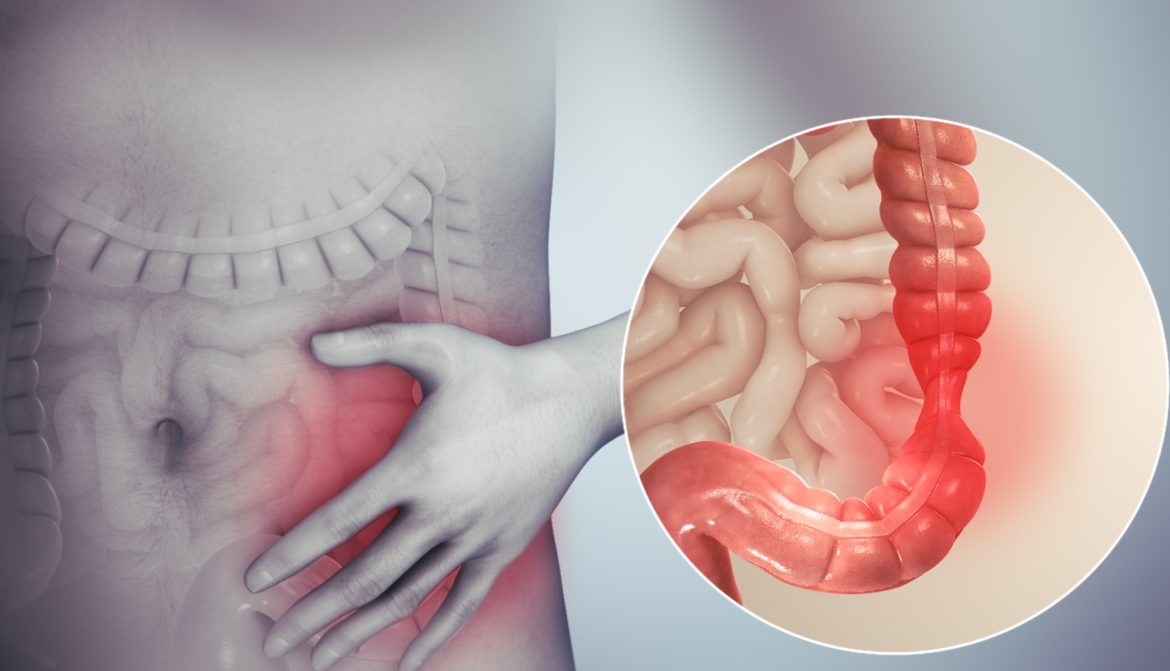Author Archives: Dr. Vaidya Karanvir Singh
Top 8 best home remedies for Weight Loss
- March 21, 2024
- Posted by Dr. Vaidya Karanvir Singh
- 0 Comment(s)
Introduction
Now adays people do many types of activities to lose weight. Some go to the gym to lose weight, some consume powders containing chemicals available in the market, and some remain hungry for hours in the name of healthy diet. All these things may sound good, but sometimes along with weight loss, they can also become the cause of many diseases. If you also want to lose weight, then apart from all these things, you can try home remedies. The special thing about home remedies is that it has no side effects
Weight loss home remedies
- Cumin water
It is very beneficial for health. To reduce body fat quickly, it is advised to consume cumin water daily on empty stomach. Nutrients like Vitamin C, K, B1, 2, 3, E, protein, calcium, carbohydrate found in cumin. It helps in improving the digestive system. Take 1teaspoon of cumin soak in 1 glass of water overnight and next day morning boil it for 2-3 minutes and then filter and drink it.
- Lemon and honey
It helps in detoxifying the body properly and increasing metabolism. For weight loss, drink lukewarm water mix with half teaspoon of lemon juice and 1 teaspoon of honey in the morning on an empty stomach. Consuming this water regularly helps rapid weight loss
- Amla
Amla are rich in vitamin C, which helps in removing toxic elements from the body. Consuming amla regularly boosts metabolism and helps in burning calories of the body faster and also increases immunity. To lose weight, you can include amla juice, raw amla in your diet.
- Triphala
It is advisable to consume triphala for weight loss. Drinking 1 teaspoon of triphala with warm water at night helps in reducing body weight and improving the digestive system. Anti- inflammatory properties are found in triphala, which are helpful in removing toxins from the body.
- Cinnamon
Cinnamon is a powerful anti-bacterial, which helps get rid of harmful bacteria. Add 1 teaspoon cinnamon powder in water and boil for 15 minutes. When it becomes lukewarm, filter it and add one spoon honey in it. Drink in the morning on an empty stomach and at night before sleeping.
- Apple cider vinegar
Mix 1 spoon apple cider vinegar and one spoon lemon juice in a glass of water and consume it. It helps in reducing ythe fat stored in the liver.
- Ginger
Add chopped ginger to 100 ml of water and boil it .Simmer for 5-10 minutes, then filter the water before drinking. It’s best fat cutter drink.
- Mint
Mint leaves helps in weight loss by aiding digestion and increasing metabolism. Mix a few drops of mint leaves juice in lukewarm water. Drink it half an hour after eating food.
URETHRITIS
- March 21, 2024
- Posted by Dr. Vaidya Karanvir Singh
- 0 Comment(s)
Introduction
The condition of inflammation in the urethra is called urethritis. This mostly happens due to bacterial infection. In urethritis, the problem of irritation and swelling occurs in the urethra. In men, semen also comes out through this tube. Urethritis can occur at any age and the risk is higher in women than in men
Causes of Urethritis
- Trauma
- Urethral stricture
- Catheterization
- Chemical irritants
- Dehydration
- Gonorrhea
- Adenovirus
- Chlamydia trachomatis
- Mycoplasma genitalium
- Trichomonas vaginalis
- Yeast
- HSV
Symptoms of urethritis
- Burning on urination
- Anal or oral infection
- Blood in urine
- Fever and chills
- Swelling
- Discharge in women
- Bloody discharge from the penis
- Urgent need to urinate
- Yellowish discharge from the penis
- Itching or irritation around the tip of the penis
- Lower abdominal pain
- Painful sexual intercourse in women
- Frequent urination with only small amounts of urine passed on each occasion
How to diagnosed urethritis
- Examination of urethra
- Pelvic ultrasound
- Cystoscopy
- Urine test
- Complete blood test
Ayurvedic view of Urethritis
According to Ayurveda, In urethritis there is inflammation of urethra. And inflammation is called shotha in Ayurveda. It can be correlate with mutraghata. Expelling urine out is a function of the apana vayu. So if the body’s Apana vayu disturbed, more likely it is going to affect the urination. Apana vayu vitiated due to excessive intake of spicy, fried food, indigestion, over exertion, excessive alcohol consumption, or climatic changes and due to intake of certain substances that increase the natural heat in the body. In Ayurveda Panchakarma therapies like Virechana (Purgation) or Basti (enemas) helping to balance the body’s doshas and promoting overall health
Single herbs that are recommended in Urethritis
- Punarnava
- Gokshura
- Varuna
- Guggulu
- Pashanbheda
- Vacha
- Mustak
- Khadir
- Giloy
- Amalaki
- Daruharidra
- Shilajit
- Kaash
- Darbha
- Ikshu
Diet and lifestyle management for Urethritis
- Drink more water and other liquids every day. It is the most effective way to wash out germs from the body.
- Avoid spicy dishes, strong tea and coffee, alcohol, cold drinks and chocolates.
- Juice of Punarnava and alovera is highly beneficial in this condition.
- Take in juice of Pashanbheda with powder of Gokshura in urethritis.
- Have coconut water.
- Do yoga exercise daily
- Use condom during sex
Home remedies for Urethritis
Apple cider vinegar
Take one tablespoons of apple cider vinegar and add a few drops of honey into it. Mix it in a glass of water. It helps in remove the accumulated bacteria in the urinary tract.
Garlic
Garlic kills the bacteria causing urethritis. And soothes the pain in the lower back and abdomen
Gokshura
It has anti-inflammatory, anti-microbial, diuretic properties, which could potentially be beneficial for managing symptoms of urethritis
Turmeric
Turmeric has anti-inflammatory antibacterial properties. It helps to alleviate symptoms of urethritis due to its ability to reduce inflammation and fight infection. And it also reduces inflammation in the urethra.
Ayurvedic treatment from CAC
| S. No. | Products | Quantity |
| 1 | Detox Premium Powder | 60 sachet |
| 2 | Uti Care Tablets | 60 tablets |
| 3 | Kidney Care Churna | 1 bottle |
| 4 | Gokhshura Capsules | 60 Capsules |
| 5 | Kidney Care Tablet | 60 tablets |
- Gokshura Capsules:
Gokshuru capsules are pure ayurvedic medicine which is very effective in kidney disorders as it has anti-inflammatory properties that reduce the swelling of the abdomen. It also acts as diuretic which causes increased urine secretion from the body and removal of all the toxins. These capsules contain pure extract of Gokshura (Tribulus terrestris). It provides effective result in acute & chronic kidney disease, chronic renal failure, cystitis, and urethritis, nephropathy, and urinary tract infections.
Recommended Dosage: Take one capsule twice daily with normal water.
- Kidney Care Tablet:
kidney plays an important role in keeping the whole body clean, well-fueled, strong and functioning properly. Kidney failure puts the body at risk, allowing waste to accumulate and damage the kidneys from inside. It is a good idea to do a kidney cleansing and keep a check on the health of the kidneys in your middle and old age. The toxins that buildup results in nausea or feeling sick to the stomach, lack of concentration and blood pressure changes are all symptoms of kidney failure.
Recommended Dosage: Take 2 tablets twice daily with normal water.
- Kidney Care Churna:
The kidney care churna is prepared from herbs like Bhumiamla (Phyllanthus niruri), Manjistha (Rubia cordifolia), & Punarnava (Boerhavia diffusa). These herbs in combination show anti-inflammatory, diuretic, antioxidant, analgesic, etc properties. Kidney care churna keep all kidney function tests (serum creatinine, urea, sodium, potassium, chlorine, & uric acid), etc in normal range. The use of this churna reduces swelling in the body, remove kidney stones, deal with urinary tract infection, general weakness, & fatigue, etc related to kidney patients.
Recommended Dosage: Take 1 teaspoonful twice daily with normal water.
- UTI Care Tablet:
UTI Care Tablets helps to treat Urinary tract infections along with the diseases related to kidney, ureters, urinary bladder, and urethra. This tablet contains pure herbal ingredients which are Yavakshar (Hordeum vulgare), kalmi Shora (Pottasium nitrate), Naushadar (Ammonium chloride), Swarna Gairik (Red ochre), etc. UTI Care Tablets are also beneficial in kidney stones, chronic kidney disease, renal colic, burning sensation or pain during micturition, and Hypertension.
Recommended Dosage: Take 1 tablet twice a day with normal water.
- Detox Premium Powder:
The powder contains all the Ayurvedic herbs which strengthen the immune system of the body and prevents the various complications by potentiating immune system. The powder includes :
Parwal Pishti – Parwal pishti is prepared from Coral calcium. It is mainly used in Pitta related disorders and helpful in bleeding disorders. This pishti relieves Ama dosha and improves the digestion power. It also improves the strength and immunity.
Shukta Pishti – It is prepared from Pearl oyster shell. Shukta pishti pacifies Pitta and Kapha dosha. It is the best ant-acid and relieves the abdominal distention. Shukta pishti reduces the rashes on the arms and legs.
Giloy Satva–Giloy satva includes water-soluble extract of Giloy/Guduchi (Tinospora Cordifolia). It balances the aggravated pitta and acts as a mild-antipyretic, antacid, and immuno-modulator. It also reduces burning sensation in the hands, feet, and body.
Kamdudha Ras–According to Ayurveda principles, Kamdudha Ras has Sheeta Virya thus it is beneficial in every Pitta Roga classified in Ayurveda. It is beneficial in the symptoms like burning sensation, restlessness, bleeding tendencies, excessive thirst, and hot flashes, vomiting with yellowish or sour water.
Akik Pishti – Akik bhasma contains Silicon Dioxide and some herbal extracts derived into in during processing with Aloe vera and Rose water. It is used in General debility, Restlessness. It works well in loss of appetite, weight loss, and feeling of excessive heat in the body.
Gandhak Rasayan – Gandhak Rasayan is a great antibacterial, antiviral ayurvedic medicine. It acts as an anti-pyretic, analgesic, & blood purifier.
Sutshekhar Ras–It is an important medicine used in Ayurveda, which acts on Pitta dosha and reduces the symptoms like nausea, vomiting, fever, headache, sour taste of mouth, restlessness, etc.
Recommended Dosage – Take 1 sachet twice a day with normal water.
WHAT IS HIGH CHOLESTEROL?
- March 21, 2024
- Posted by Dr. Vaidya Karanvir Singh
- 0 Comment(s)
INTRODUCTION
· High cholesterol refers to high levels of cholesterol in the blood is increased . Cholesterol is a waxy, fat- like substance required by the body to build healthy cells , vitamin D and hormones.
· The fatty acid deposits in the blood vessels that block the arteries. The heart will not able to pump the blood in the adequate amount hence causing heart attack.
· Cholesterol is a type of fat that our bodies need to function properly.
TYPES
· Low- density lipoprotein (LDL) or “bad” cholesterol
· High – density lipoprotein (HDL) or “good” cholesterol
· HDL helps remove LDL from the bloodstream , excessive LDL can accumulate in the blood vessel leading to blockages and heart – related problems.
CAUSES OF HIGH CHOLESTEROL
- Genetic features
- Dietary factors like high fat rich diet intake , saturated fat like meats , deep fried food , dairy products , packaged snacks etc.
- Stress
- Medications (corticosteroids , certain immunosuppressives , hormones )
- Health conditions ( high blood pressures, diabetes , obesity , kidney disease , pregnancy etc)
SYMPTOMS OF HIGH CHOLESTEROL
Some common symptoms are :
- Depression
- Chest pain
- Heart attacks
- Xanthelasmas
- Fatigue
- Poor appetite
RISK FACTORS
- Age
- Lack of exercise
- Poor diet
- Smoking
- Excessive intake of alcohol
COMPLICATIONS
1. Heart attack
2. Chest pain ( angina)
3. Stroke
AYURVEDA FOR CHOLESTEROL
· According to ayurveda , Mead dhatu (tissue) can be correlated to cholesterol or adipose tissue and may support various circulatory channels (shrotas) inside the body.
· Accumulated ama cause Mead dhatu vitiation which cause blockage of srotas . This obstruction leads to stoppage of other dhatudushti and only meda dhatu increase which further leads to meda vaha srotodushti vikara.
HERBS
– Arjun
– Garlic
– Ginger
– Guggul
– Haridra
– Amla
– Coriander seeds
– Fenugreek
Yoga Asana
– Sarvang asana
– Ardha- matsyendr asana
– Chakrasana
– Shalabh asana
Healthy diet for controlling high cholesterol
1. Avocados : It helps in reducing the bad cholesterol and increases good cholesterol in the body.
2. Berries : Blueberries and strawberries helps in lowering the bad cholesterol.
3. Green leafy vegetables : spinach , broccoli , cauliflower etc lower the risk of heart – related disorders.
4. Fruits : consumption of fresh fruits contain pectin which reduces the cholesterol in the body.
5. Drink plenty of water .
THING TO AVOID
1. Do not consume processed food , spicy , fried food .
2. Do not consume caffeinated and carbonated drinks.
3. Avoid intake of alcohol
4. Quit smoking
5. Limit your sugar intake
Nephrotic Syndrome
- March 20, 2024
- Posted by Dr. Vaidya Karanvir Singh
- 0 Comment(s)
Introduction
Nephrotic syndrome is a kidney disorder caused by your body producing too much protein in your urine.
Nephrotic syndrome typically causes damage to groups of small blood vessels in your kidneys. which filters waste and extra water from your blood. Nephrotic syndrome cause swelling, especially in your feet and ankles, and increases the risk of other health problems.
Causes of Nephrotic syndrome
- Clot in kidney vein
- Infection
- Amyloidosis
- Lupus (SLE)
- Genetic disorders
- Immune disorders
- Diabetic kidney disease
- Membranous nephropathy
- Hereditary nephropathy
Symptoms of Nephrotic syndrome
- Hyperlipidemia
- Lipiduria
- Puffy eyes
- Seizures
- Poor appetite
- Pitting edema in legs
- Swelling in feet and ankles
- Fatigue
- Weight gain due to food retention
- Loss of appetite
- Foamy urine
Diagnosis of Nephrotic syndrome
- Blood test
- Urine test
- Kidney function test
- Kidney tissue sample test
Complications of Nephrotic syndrome
- Poor nutrition
- High cholesterol and triglycerides
- Blood clots
- High BP
- Acute kidney injury
- Chronic kidney disease
- Infections
Herbal remedies for Nephrotic syndrome
Punarnava
It increases the circulation of blood to the kidney thus reviving kidney from many diseases. It acts best in edema, ascites, as well as renal failure. The combination of anti- inflammatory action of punarnava makes it best in the renal inflammatory disease. It is a safe drug in nephrotic syndrome.
Gokshuru
It has anti-lithiasis properties it may help against the production of kidney stone. The damage tissues from renal failure are healed by gokhru and also act as diuretic.
Palaash
It has antioxidant, anti-inflammatory, anti-septic properties. Palaash proves to be very beneficial in urinary problems and swelling. It is used for treatment of kidney stones, glycosuria, nephrotic syndrome, nephritis etc.
Turmeric
It has active compound called curcumin that has antioxidant, anti-inflammatory properties, It may help reduce kidney inflammation. It’s very effective in treat nephrotic syndrome.
Lavender oil
It has anti-inflammatory, anxiolytic, antimicrobial, antioxidant properties. This may help reduce stress and anxiety associated with nephrotic syndrome.
Diet for nephrotic syndrome
- Avoid coffee, alcohol
- High quality protein like red meat, buffalo milk to be avoided
- Eat fresh fruits like apples, citrus fruits, berries
- Try to eat low salt in your diet
- Avoid smoking and alcohol consumption
- Try to lose weight
- Do exercise regularly
- Maintain healthy blood pressure
- Balancing fluid intake
Ayurvedic view of nephrotic syndrome
In ayurveda it is correlated with disorder of mutra vaha and udakavaha srotasa which are the urine carrying channels. Aggravation of Kapha along with vitiation of rasadhatu, is considered to be the main factor that causes glomerular inflammation which results in leakage of ojas component through the urine. In ayurvedic treatment cooling and soothing herbs included in mutravirajniya (herbs to restore natural urine color and texture) are used to treat inflammation.
Panchakarma syndrome therapies for nephrotic are include Vaman, Virechana, Basti, Swedana
CHANDIGARH AYURVED CENTRE MEDICATIONS FOR NEPHROTIC SYNDOME
- Gokshura Capsules:
Gokshuru capsules are pure ayurvedic medicine which is very effective in kidney disorders as it has anti-inflammatory properties that reduce the swelling of the abdomen. It also acts as diuretic which causes increased urine secretion from the body and removal of all the toxins. These capsules contain pure extract of Gokshura (Tribulus terrestris). It provides effective result in acute & chronic kidney disease, chronic renal failure, cystitis, and urethritis, nephropathy, and urinary tract infections.
Recommended Dosage: Take one capsule twice daily with normal water.
- Kidney Care Tablet:
kidney plays an important role in keeping the whole body clean, well-fueled, strong and functioning properly. Kidney failure puts the body at risk, allowing waste to accumulate and damage the kidneys from inside. It is a good idea to do a kidney cleansing and keep a check on the health of the kidneys in your middle and old age. The toxins that buildup results in nausea or feeling sick to the stomach, lack of concentration and blood pressure changes are all symptoms of kidney failure.
Recommended Dosage: Take 2 tablets twice daily with normal water.
- Kidney Care Churna:
The kidney care churna is prepared from herbs like Bhumiamla (Phyllanthus niruri), Manjistha (Rubia cordifolia), & Punarnava (Boerhavia diffusa). These herbs in combination show anti-inflammatory, diuretic, antioxidant, analgesic, etc properties. Kidney care churna keep all kidney function tests (serum creatinine, urea, sodium, potassium, chlorine, & uric acid), etc in normal range. The use of this churna reduces swelling in the body, remove kidney stones, deal with urinary tract infection, general weakness, & fatigue, etc related to kidney patients.
Recommended Dosage: Take 1 teaspoonful twice daily with normal water.
- UTI Care Tablet:
UTI Care Tablets helps to treat Urinary tract infections along with the diseases related to kidney, ureters, urinary bladder, and urethra. This tablet contains pure herbal ingredients which are Yavakshar (Hordeum vulgare), kalmi Shora (Pottasium nitrate), Naushadar (Ammonium chloride), Swarna Gairik (Red ochre), etc. UTI Care Tablets are also beneficial in kidney stones, chronic kidney disease, renal colic, burning sensation or pain during micturition, and Hypertension.
Recommended Dosage: Take 1 tablet twice a day with normal water.
- Detox Premium Powder:
The powder contains all the Ayurvedic herbs which strengthen the immune system of the body and prevents the various complications by potentiating immune system. The powder includes :
Parwal Pishti – Parwal pishti is prepared from Coral calcium. It is mainly used in Pitta related disorders and helpful in bleeding disorders. This pishti relieves Ama dosha and improves the digestion power. It also improves the strength and immunity.
Shukta Pishti – It is prepared from Pearl oyster shell. Shukta pishti pacifies Pitta and Kapha dosha. It is the best ant-acid and relieves the abdominal distention. Shukta pishti reduces the rashes on the arms and legs.
Giloy Satva–Giloy satva includes water-soluble extract of Giloy/Guduchi (Tinospora Cordifolia). It balances the aggravated pitta and acts as a mild-antipyretic, antacid, and immuno-modulator. It also reduces burning sensation in the hands, feet, and body.
Kamdudha Ras–According to Ayurveda principles, Kamdudha Ras has Sheeta Virya thus it is beneficial in every Pitta Roga classified in Ayurveda. It is beneficial in the symptoms like burning sensation, restlessness, bleeding tendencies, excessive thirst, and hot flashes, vomiting with yellowish or sour water.
Akik Pishti – Akik bhasma contains Silicon Dioxide and some herbal extracts derived into in during processing with Aloe vera and Rose water. It is used in General debility, Restlessness. It works well in loss of appetite, weight loss, and feeling of excessive heat in the body.
Gandhak Rasayan – Gandhak Rasayan is a great antibacterial, antiviral ayurvedic medicine. It acts as an anti-pyretic, analgesic, & blood purifier.
Sutshekhar Ras–It is an important medicine used in Ayurveda, which acts on Pitta dosha and reduces the symptoms like nausea, vomiting, fever, headache, sour taste of mouth, restlessness, etc.
Recommended Dosage– Take 1 sachet twice a day with normal water.
How To Get Rid Hemorrhoids Naturally
- March 20, 2024
- Posted by Dr. Vaidya Karanvir Singh
- 0 Comment(s)
Introduction
Hemorrhoids are also called piles. Piles is a disease which is very painful. In this, there is swelling inside and outside the nus and the lower part of the rectum. Due to this, warts are formed inside and outside the anus, or at any one place. About 60 percent of people people have the problem of piles at some stage of their age. It is very important for the patient to get Piles treatment at the right time. If piles are not treated on time, the problem increases significantly.
Causes of Hemorrhoids
- Constipation
- Eating more fried and spicy food
- Not consuming fiber rich food
- Depression
- Smoking and alcohol consumption
- Laziness or reducing physical activity
- Inability to defecate properly
- There is a risk of plies in women due to pressure on the anal area during delivery
- Some people have stand for hours due to their employment
- Have to left heavy weight
Symptoms of Hemorrhoids
- Redness, itching and swelling around the anus
- Feeling extreme pain while going to the toilet
- Stomach not being cleared
- Blood in stool
- Pain
- Pain and discomfort during defecation
Natural Remedies for hemorrhoid
Aloe Vera
Anti-inflammatory and therapeutic properties of aloevera reduce the burning sensation of piles and prevent constipation. It is beneficial in treating both internal and external piles. Apply aloe vera gel on the warts outside the anus. It soothes irritation and itching.
Apple cider vinegar
It helps in shrinking the blood vessels due to its astringent properties. In case of bloody piles, add one tablespoon of apple cider vinegar in a glass of water and drink it twice a day In case of bad piles, soak cotton in apple cider vinegar and place it in the anus. This will provide relief from burning and itching.
Olive oil
It has anti-inflammatory properties. It reduces swelling in blood vessels apply olive oil on the external piles warts.
Almond oil
Dip cotton in pure almond oil and apply it on the wart in piles. It reduces swelling and irritation
Sitz bath
Sitz bath is a warm , shallow bath you sit in to relieve discomfort in your perineal region. It helps reduce pelvic floor discomfort and itching. You can add Epsom salt and Alum powder to the sitz bath.
Black cumin seeds
It can provide relief from the pain of piles. Make a powder f black cumin seeds. Roast it and consume half teaspoon of roasted powder with one glass of water daily
Triphala
Triphala is a herbal remedy used in Ayurveda. It has laxative properties that can help relieve constipation, a common cause of hemorrhoids.
Turmeric
It has anti-inflammatory properties and can help reduce pain and swelling. Make a paste by mixing turmeric powder in water and apply it on the affected
Neem leaves
The anti-bacterial, anti-inflammatory properties of neem can help reduce pain, itching. Neem oil can be applied topically
Radish juice
It act as a natural laxative and aids in easy passing and loosening of stools. It helps in removal of waste material from body. Treating piles at home radish juice is the best home remedies
Papaya
Eat papaya daily. This will not cause constipation. It will prevent pain during defecation.
Piles management according to Chandigarh Ayurveda Centre
PILES RELIEF KIT
S. No. | Products | Quantity |
1 | Triphla Guggulu | 60 Tablets |
2 | Piles Soft Tablet | 60 Tablets |
3 | Panchsakar Churna | 1 Bottles |
4 | Triphala Syrup | 2 Bottles |
- Piles Soft Tablet
It is herbo mineral and purely Ayurvedic formulation .Arsh care tablets are 100% natural & safe containing 650mg extracts of Reetha Chhilka purified in Cow’s milk. The herb used for formulation of these tablets show antioxidant, anti-inflammatory, laxative properties. It makes your stool soft and helps prevent constipation. It is effective against bleeding piles and reduce the pain while defecation. The main uses of arsh care tablet is in Bleeding piles, prevent constipation, act as laxative, Fissures, Fistula.
DOSAGE: Take 2 tablets twice daily.
- Triphala Guggulu Tablet
Triphala Guggulu Tablet has been used in ayurvedic medicine since ages. It is thought to support bowel health and aid digestion. As an antioxidant, it is used to detoxify the body and support the immune system. It is known for its antibacterial, antioxidant, antiviral abilities. It is prescribed for a wide range of ailments like promoting oral health, treating fatigue and gastric distress, pneumonia, constipation, vaginal infections and most importantly boost the immune system.
DOSAGE: Take 2 tablets twice daily.
- Panchsakar Churna
This is an ayurvedic remedy that is prepared from ingredients like Shunti, Haritaki, Pippali, Trivrit, and Sauvarchala lavana. It mainly acts as a Vatakaphahara. Regular use of this churna gives effective result in loss of appetite, bloating related to piles patient. It also helps in relieving the abdominal pain and constipation very easily.
Recommended Dosage: Take 1 teaspoonful daily with warm water at bedtime.
- Triphala Syrup
As the name suggests Triphala means (Haritaki, Bibhitaki, and Amalaki) herbs are used for syrup formation. Each fruit is thought to positively impact on the body’s three doshas. This is an amazing syrup that cleans your bowel naturally and give relieve from chronic constipation related to the piles patient. It also helps in healing the inflammation of fistula- in – ano.
Recommended Dosage: Take 2 teaspoonful of this syrup twice a daily with normal water.
CHRONIC KIDNEY DISEASE AND ITS AYURVEDIC MANAGEMENT
- March 20, 2024
- Posted by Dr. Vaidya Karanvir Singh
- 0 Comment(s)
INTRODUCTION
Chronic kidney disease (CKD) is a disease which is characterized by loss of kidney function. The kidneys get damaged in this disease. Kidneys are the excretory organs of body which filter blood and remove any unwanted wastes from the body. They maintain electrolytic and fluid balance in body. The excessive fluid and wastes are removed from the body in the form of urine. Chronic kidney disease is also known as chronic kidney failure. Kidneys don’t perform their function well and thus toxins or unwanted substances get collected in body. This leads to manifestation of other health problems such as hypertension, stroke, etc.
The severity of chronic kidney disease varies from person to person. In the early period, there are very few signs and symptoms and a person doesn’t pay much attention until the condition gets advanced.
The treatment of chronic kidney disease involves slow progression of the kidney damage, depending on the underlying cause of the disease. In severe cases, dialysis or a kidney transplant is required.
WHAT ARE THE CAUSES OF CHRONIC KIDNEY DISEASE?
Chronic kidney disease occurs because of several reasons. Following are some of the causes of chronic kidney disease:
- Inflammation of glomerulus known as glomerulonephritis
- Suffering from diabetes
- Hypertension
- Interstitial nephritis
- Presence of kidney stones causing obstruction of the urinary pathway
- Formation of multiple cysts in kidneys
- Enlarged size of prostate gland known as prostatomegaly
- Frequent infections of kidney
WHAT ARE THE FACTORS WHICH MAKE A PERSON MORE SUSCEPTIBLE TO CHRONIC KIDNEY DISEASE?
There are some factors which increase the risk of a person to develop chronic kidney disease. Following are the risk factors of chronic kidney disease:
- Having a genetic predisposition of the disease
- Obesity
- No physical exercise
- Increased sugar levels in blood
- Cigarette smoking
- Alcohol abuse
- Increasing age
- Any abnormal structure of the kidney
- Certain medications
WHAT ARE THE SIGNS AND SYMPTOMS OF CHRONIC KIDNEY DISEASE?
As kidneys don’t function properly, the wastes get accumulated and there occurs fluid in body. The symptoms of chronic kidney disease develop slowly with time. Following are some common signs and symptoms of the disease:
- Nausea and vomiting
- Decreased appetite
- Swelling in ankles and feet
- Feeling tired
- Muscle ache
- Mental confusion
- Excessive or lack of sleep
- Shortness of breath
- Itching
- Difficulty in urination
SOME OF THE COMPLICATIONS WHICH ARE ASSOCIATED WITH CHRONIC KIDNEY DISEASE
Kidney failure is associated with various other health related issues. Some of the following are the complications which are associated with it:
- Pulmonary edema
- Anemia
- Fluid retention in body
- Seizures
- Osteoporosis
- Complications in pregnancy
- Accumulation of fluid in body due to loss of kidney functioning
- Increased bone fractures
- Decreased sexual desire
- Erectile dysfunctioning
- Recurrent body infections
- Inflammation in heart
- Infertility
HOW CHRONIC KIDNEY DISEASE IS BEING DIAGNOSED?
The doctor will ask about the signs and symptoms of the disease to the patient. He will do a physical examination of the patient. He will take his family history and recommend some tests for the evaluation of the disease. Following are the tests required for the diagnosis of chronic kidney disease:
- Blood tests
- Urine tests
- Ultrasound
- CT scan
- MRI scan
WHAT IS THE AYURVEDIC CONCEPT OF CHRONIC KIDNEY DISEASE?
In Ayurveda, chronic kidney disease comes under the category of vrikk roga. It occurs because of the aggravation of pitta dosha. The pitta dosha further disturbs kapha and vata doshas. It is a tridoshaj roga which blocks mutravaha and medovaha strotas. Bad eating habits and unhealthy lifestyle are the main causes of chronic kidney disease. There are various ayurvedic herbs which are very beneficial for the management of chronic kidney disease such as amalaki, draksha, patola, shilajit, etc.
MANAGEMENT OF CHRONIC KIDNEY DISEASE WITH THE MEDICATIONS OF CHANDIGARH AYURVED CENTRE
Here are some of the medicines of Chandigarh Ayurved centre which are used for the treatment of chronic kidney disease:
1. Gokshura Capsules
Gokshuru capsules are pure ayurvedic medicine which is very effective in kidney disorders as it has anti-inflammatory properties that reduce the swelling of the abdomen. It also acts as diuretic which causes increased urine secretion from the body and removal of all the toxins. These capsules contain pure extract of Gokshura (Tribulus terrestris). It provides effective result in acute & chronic kidney disease, chronic renal failure, cystitis, and urethritis, nephropathy, and urinary tract infections.
Recommended Dosage: Take one capsule twice daily with normal water.
2. Kidney Care Tablet
Kidney plays an important role in keeping the whole body clean, well-fueled, strong and functioning properly. Kidney failure puts the body at risk, allowing waste to accumulate and damage the kidneys from inside. It is a good idea to do a kidney cleansing and keep a check on the health of the kidneys in your middle and old age. The toxins that buildup results in nausea or feeling sick to the stomach, lack of concentration and blood pressure changes are all symptoms of kidney failure.
Recommended Dosage: Take 2 tablets twice daily with normal water.
3. Kidney Care Churna
The kidney care churna is prepared from herbs like Bhumiamla (Phyllanthus niruri), Manjistha (Rubia cordifolia), & Punarnava (Boerhavia diffusa). These herbs in combination show anti-inflammatory, diuretic, antioxidant, analgesic, etc properties. Kidney care churna keep all kidney function tests (serum creatinine, urea, sodium, potassium, chlorine, & uric acid), etc in normal range. The use of this churna reduces swelling in the body, remove kidney stones, deal with urinary tract infection, general weakness, & fatigue, etc related to kidney patients.
Recommended Dosage: Take 1 teaspoonful twice daily with normal water.
4. UTI Care Tablet
UTI Care Tablets helps to treat Urinary tract infections along with the diseases related to kidney, ureters, urinary bladder, and urethra. This tablet contains pure herbal ingredients which are Yavakshar (Hordeum vulgare), kalmi Shora (Pottasium nitrate), Naushadar (Ammonium chloride), Swarna Gairik (Red ochre), etc. UTI Care Tablets are also beneficial in kidney stones, chronic kidney disease, renal colic, burning sensation or pain during micturition, and Hypertension.
Recommended Dosage: Take 1 tablet twice a day with normal water.
5. Detox Premium Powder
The powder contains all the Ayurvedic herbs which strengthen the immune system of the body and prevents the various complications by potentiating immune system. The powder includes :
Parwal Pishti– Parwal pishti is prepared from Coral calcium. It is mainly used in Pitta related disorders and helpful in bleeding disorders. This pishti relieves Ama dosha and improves the digestion power. It also improves the strength and immunity.
Shukta Pishti– It is prepared from Pearl oyster shell. Shukta pishti pacifies Pitta and Kapha dosha. It is the best ant-acid and relieves the abdominal distention. Shukta pishti reduces the rashes on the arms and legs.
Giloy Satva–Giloy satva includes water-soluble extract of Giloy/Guduchi (Tinospora Cordifolia). It balances the aggravated pitta and acts as a mild-antipyretic, antacid, and immuno-modulator. It also reduces burning sensation in the hands, feet, and body.
Kamdudha Ras–According to Ayurveda principles, Kamdudha Ras has Sheeta Virya thus it is beneficial in every Pitta Roga classified in Ayurveda. It is beneficial in the symptoms like burning sensation, restlessness, bleeding tendencies, excessive thirst, and hot flashes, vomiting with yellowish or sour water.
Akik Pishti– Akik bhasma contains Silicon Dioxide and some herbal extracts derived into in during processing with Aloe vera and Rose water. It is used in General debility, Restlessness. It works well in loss of appetite, weight loss, and feeling of excessive heat in the body.
Gandhak Rasayan– Gandhak Rasayan is a great antibacterial, antiviral ayurvedic medicine. It acts as an anti-pyretic, analgesic, & blood purifier.
Sutshekhar Ras–It is an important medicine used in Ayurveda, which acts on Pitta dosha and reduces the symptoms like nausea, vomiting, fever, headache, sour taste of mouth, restlessness, etc.
Recommended Dosage– Take 1 sachet twice a day with normal water.
HOW TO TREAT LIVER CIRRHOSIS HOLISTICALLY ?
- March 20, 2024
- Posted by Dr. Vaidya Karanvir Singh
- 0 Comment(s)
DEFINITION
- Cirrhosis also known as Liver cirrhosis or Hepatic cirrhosis.
- Liver Cirrhosis is a chronic liver disease characterized by the replacement of normal liver tissue with scar tissue , leading to progressive loss of liver function.
Causes
- Long – term alcohol abuse
- Viral hepatitis (hepatitis B,C and D)
- Nonalcoholic Fatty liver disease
- Wilson’s disease
- Cystic fibrosis
- Infection such as syphilis or brucellosis
- Medications
- Alpha-1 antitrypsin deficiency
- Autoimmune hepatitis
SYMPTOMS
- Loss of appetite
- Fatigue
- Weight loss
- Yellow discoloration in the skin and eyes
- Clubbing
- Slurred speech
- Drowsiness
- Itchy skin
- Visible blood vessels that look like spiders (spider angiomas)
- nausea
Complications
- High blood pressure in the veins that supply the liver. This condition is known as portal hypertension.
- Spleen Enlargement
- Jaundice
- Infections
- Edema
- Ascites
- Liver cancer
- Bleeding
AYURVEDA FOR LIVER CIRRHOSIS
- According to ayurveda liver cirrhosis can be correlate with “Kumbha Kamla”.
- An imbalance of the three doshas (Vata , Pitta and Kapha).
- Excessive aggravation of pitta along with itself vitiate Rakta and mansa dhatu development of kamla disease.
AYURVEDA TREATMENT FOR LIVER CIRRHOSIS
Panchakarma Therapies for liver cirrhosis
- Swedan
- Vaman
- Virechana
- Uro vasti
HOME REMEDIES FOR LIVER CIRRHOSIS
- Avocado
Avocado contain a rich amount of antioxidant glutathione that helps liver to fight against the toxins.
- Beets and Carrots
- Green Tea
Garlic
Garlic helps in the activating liver enzymes which helps to eliminate the toxins from the body.
- Turmeric
Turmeric contains curcumin , antioxidant , anti-inflammatory and hepatoprotective properties.
- Licorice
Licorice root has anti-inflammatory and antioxidant properties that helpful in liver- related problems.
- Punarnava
Punarnava it improves digestion , maintain liver health
- Diet and Lifestyle changes
- Avoid excess consume salt.
- Avoid intake of alcohol.
- Avoid caffeine based products.
- Avoid fried , spicy , and junk food.
- Maintain a well- balanced diet.
- Keep your body hydrated.
- Eat fresh fruits and green vegetables in your daily diet.
- Eat foods that are high in fiber , such as legumes and whole grains.
ACCORDING TO CHANDIGARH AYURVED CENTRE MANAGEMENT OF LIVER CIRRHOSIS
LIVER CIRRHOSIS CARE KIT
All Products description in detail:
- 1. Kutki Capsule
These herbal capsules are prepared from the standardized extract of Picrorhiza kurroa. The herb used in this capsule show anti-inflammatory and antioxidant properties. These properties help in treating liver cirrhosis naturally.
Recommended Dosage: Take two capsules twice a day with normal water.
- Detox Premium Powder
This is a herbo-mineral preparation that contains following ingredients: Moti pishti, Parwal pishti, Shukta pishti, Giloy satav, Kamdudha ras, Jahar Mohra pishti, Akik pishti, Gandhak rasayan, Shankh bhasam, Sutshekhar ras, Sudhyog tab, Shwet parpati, Yavakshaar. Premium detox powder keeps your liver cell healthy. It clears away the toxins from the body and stimulates the function of the liver and increases the flow of bile
Recommended Dosage: Take one sachet twice a day with normal water.
- Liver Care Syrup
It is a herbo-mineral Syrup which is purely ayurvedic formulation. CAC Liver Care syrup helps in balancing Pitta dosha. This Syrup enhances regeneration of liver cells, promote functions of liver, and improve blood flow from the liver. It helps in the treatment of fatty liver, Liver cirrhosis, Hepatitis, hepatomegaly, and obstructive Jaundice. CAC Liver Care syrup contains Ingredients like Kalmegh (Andrographis paniculata), Kutaki(Picrorhiza kurroa), Bhumi amla( phyllanthus niruri), Giloy(Tinopora Cordifolia), Yavakshar( Hordeum vulgare), Imli Kshar( Tamarindus indica), Mukta Shukta pisti etc. These herbs show Antioxidant, anti-inflammatory, Hepato-protective, properties. This syrup improves digestion, enhances appetite.
It shows results in Fatty Liver, Liver Cirrhosis, Hepatitis A, Hepatitis B, Hepatitis C, Liver Cancer, Hepatomegaly, Inherited diseases- Hemochromatosis and Wilson’s disease, and Jaundice.
DOSAGE– Take 2 tablespoon twice daily
- Liver Care Tablet
It is a herbo-mineral tablet of size 650 MG and is a purely ayurvedic formulation. CAC Liver Care tablets help in balancing Pitta dosha. These tablets stimulate the growth of new liver cells, promote functions of liver, and improve blood flow from the liver. It helps in the treatment of fatty liver, Liver cirrhosis, Hepatitis, hepatomegaly, and obstructive Jaundice. CAC Liver Care Tablets contains Ingredients like Kalmegh (Andrographis paniculata), Kutaki(Picrorhiza kurroa), Bhumi amla( phyllanthus niruri), Giloy(Tinopora Cordifolia), Yavakshar( Hordeum vulgare), Imli Kshar( Tamarindus indica), Mukta Shukta pisti etc. it shows results in Hepatomegaly, Inherited diseases- Hemochromatosis and Wilson’s disease, Jaundice and Obstructive jaundice
DOSAGE: Take one tablet twice a day with normal water.
- Panchsakar Churna
It is a herbo mineral and purely ayurvedic formulation. It mainly works on your Vata and pitta dosha of your body. It can cure Chronic Constipation and help relieve symptoms of Acidity, indigestion, Belching and colic pain. It acts as a mild Laxative and reduces Bloating. It works very efficiently on a disease named IBS (Irritable bowel syndrome) which is very common nowadays that affects your day to day activities. CAC Panchsakar churna is 100% natural and pure. It is prepared from various herbs like Haritaki, Shunthi, Swaran Patri, Shatapushpa, and Saindhav Lavan that show antioxidant, anti-inflammatory and laxative properties.PANCHSAKAR CHURNA contains Haritaki (Terminalia Chebula), Shunthi (Zingiber Officinale), Saindhava Lavana (Rock Salt), Svarna Patri (Cassia Angustifolia), Shatapushpa (Foeniculum Vulgare)
DOSAGE: Take one tablespoon at night with normal water.
ENLARGED PROSTATE AND ITS AYURVEDIC MANAGEMENT
- March 20, 2024
- Posted by Dr. Vaidya Karanvir Singh
- 0 Comment(s)
INTRODUCTION
Enlarged prostate is known as benign prostatic hyperplasia. It is a condition which is characterized by increase in size of prostate gland. Prostate gland is a male accessory gland which is present below the urinary bladder and in front of rectum. The size of prostate gland is same as of walnut and it surrounds urethra. It mostly occurs in aged men. Difficulty in urination, urgency to urinate and feeling of heaviness in lower abdomen are some of the most common symptoms of an enlarged prostate.
Benign prostate hyperplasia is not cancerous but if not managed at time, it can lead to serious health implications. There are some oral medications and surgery which is beneficial for its treatment.
WHAT ARE THE CAUSES OF ENLARGED PROSTATE?
There has not been found exact cause of enlargement of prostate gland. But it is believed to be due to changes in sex hormones with increasing age. This leads to abnormal growth of prostate gland leading to formation of tumor. Urethra is a tube which carries urine and ejaculation out from the body. When the prostate gland gets enlarged, it causes blockage of the urinary tract and thus leads to obstruction in urinary flow.
SOME OF THE OTHER CAUSES WHICH ARE RESPONSIBLE FOR ENLARGED PROSTATE ARE:
- Inflammation of prostate gland
- Infection of urinary tract
- Presence of stones in urinary bladder or kidneys
- Narrowing of the urethra
- Scarring of neck of urinary bladder due to any surgery
- Nervous problem
- Certain medications like anti-depressants, painkillers, etc
WHAT ARE THE RISK FACTORS OF ENLARGED PROSTATE?
The factors which increase the risk of a person developing enlarged prostate are:
- Having a genetic predisposition to enlarged prostate
- Increasing age, mostly above 50 years
- Suffering from diabetes
- Heart problems
- No physical exercise
- Increased body weight
WHAT ARE THE SIGNS AND SYMPTOMS OF ENLARGED PROSTATE?
The common signs and symptoms of enlarged prostate gland are:
- Urgent need to urinate
- Dribbling of urine
- Urinary incontinence
- Increased urination at night
- Inability to completely empty the bladder
- Pain during urination or ejaculation
- Weak stream of urine
- Presence of blood in urine
- Odor in urine
WHAT ARE THE COMPLICATIONS WHICH ARE ASSOCIATED WITH ENLARGED PROSTATE?
If the enlarged prostate is not treated properly, then it leads to serious health complications. Following are some of the associated complications of enlarged prostate gland:
- Stones in urinary bladder
- Retention of urine in bladder
- Urinary tract infections
- Damage to the urinary bladder
- Kidney damage
HOW THE DIAGNOSIS OF ENLARGED PROSTATE IS DONE?
The doctor will ask about the signs and symptoms of the disease to the patient. He will do a proper physical examination of the patient as digital rectal examination. He will suggest some of the following tests to the patient:
- Blood test
- Urine test
- Prostate-specific antigen (PSA) test
- Urinary flow test
- Postvoid residual volume test
WHAT IS THE AYURVEDIC CONCEPT OF ENLARGED PROSTATE GLAND?
In Ayurveda, enlargement of prostate gland occurs because of the vitiation of vata and kapha dosha. This leads to increase in size of the gland. There occurs dushti of raktavaha, mamsavaha sroto dushti. This causes manifestation of the symptoms like weak urine stream, nocturia and dribbling of urine.
Some of the ayurvedic herbs which are beneficial for management of enlarged prostate gland are:
- Gokshura
- Pashanbheda
- Harad
- Bahera
- Amla
- Punarnava
- Nishoth
- Atibala
- Mulethi
MANAGEMENT OF ENLARGED PROSTATE WITH THE MEDICINES OF CHANDIGARH AYURVED CENTRE
Here are some of the medicines of Chandigarh Ayurved centre which are used for the treatment of enlargement of prostate gland:
1. Detox Premium Powder
Detox premium powder is made up of natural herbs and bhasmas like iloy satav, gandhak rasayan, tal sindoor, shankh bhasma, moti pishti, akik pishti, etc. The powder relieves the burning sensation, irritation, discomfort, and normalizes the aggravation of the pitta dosha.
Recommended Dosage– Take 1 sachet twice daily with normal water.
2. Trikatu Syrup
Trikatu syrup is widely used to balance the aggravated Tridosha and mainly composed of Ginger (Zingiber officinale), Pippali (Piper longum), and Maricha (Piper nigrum). The ingredients used in the formation of the syrup reduce the symptoms and prevent further enlargement of the gland.
Recommended Dosage– Take 2 teaspoonfuls thrice daily.
3. UTI Care Tablets
UTI Care Tablet is an herbal formulation of Sajjakshar (Bergenia lingulata), Gokshura (Tribulus terrestris), Punarnava (Boerhavia diffusa), etc. The capsule cures the flow of urine, relieves the burning sensation, swelling, pain, and discomfort.
Recommended Dosage– Take 1 Tablet twice daily with normal water.
4. Sheet Dhara Syrup
This is the ayurvedic formulation of Ajwain satv, Peppermint, and Mushak kapoor that balances the vata and pitta dosha. The syrup has coolant properties thus it is very beneficial to cure abdominal pain, discomfort, and improves the metabolism of digestion.
Recommended Dosage– Take half teaspoonful of this syrup in half a cup of water. Drink this mixture twice daily on an empty stomach.
5. Panchasakar Churna
The churna has best results in the detoxification of excess toxins from the body and maintains the proper metabolism. It is made up of a total of 5 ingredients – Shunthi (Zingiber officinale), Haritaki (Terminalia chebula), Svaran patri (Cassia angustifolia), Shatapushpa (Foeniculum vulgare),Sauvarchala lavana (Rock salt). The powder reduces the inflammation, redness, relieves constipation, abdominal discomfort, etc. and also prevents it from re-occurring.
Recommended Dosage– Take 1 teaspoonful at bedtime with lukewarm water.
6. Kanchnaar guggulu
Kanchnaar guggulu has anti-bacterial, analgesic, anti-oxidant, anti-inflammatory properties that subside the symptoms of BPH quickly and is very beneficial for weight loss, any type of cyst, thyroid, etc. Each tablet consist of Amalaki (Emblica officinalis), Haritaki (Terminalia chebula), Elaichi (Elettaria cardamomum), Maricha (Piper longum), etc.
Recommended Dosage– Take 1 tablet twice daily with normal water.
Top 12 Herbs to Get Rid Of Jaundice
- March 20, 2024
- Posted by Dr. Vaidya Karanvir Singh
- 0 Comment(s)
Introduction
Jaundice is a disease related to liver. This problem affects a person when the level of bilirubin in the body increases significantly. Bilirubin formed when red blood cells break down. Due to excessive amount of bilirubin in the body, it starts having adverse effects on the liver, due to which the ability of liver to function gets affected. Gradually, when bilirubin spreads throughout the body, the person becomes vulnerable to jaundice.
Causes of jaundice
- Viral infections: Due to several liver infections such as Hepatitis A, B, C, D, and Epstein-Barr virus infection
- Excessive alcohol consumption
- Inflammation of the bile duct
- Hemolytic
- Gilbert syndrome
- Obstruction of the bile duct
- B12 deficiency
Symptoms of jaundice
- High fever
- Paleness in body
- Yellowness appearing in the eyes
- Feeling cold even in normal weather
- Change in color of urine and stool
- Stomach ache
- Loss of appetite
- Nausea and vomiting
Top 12 Herbs to get rid jaundice
- Mint
The nature of mint is cooling, calms the digestive fire inside the body. Take some mint leaves and extract their juice. Now mix 1 teaspoon of honey in this and drink once a day.
- Coconut water
Drinking coconut water is beneficial in jaundice. Consumption of coconut water in jaundice heals the liver and improves the digestive system.
- Sugarcane juice
Sugarcane juice may keep bilirubin levels in control and may help in jaundice. If anyone suffering from jaundice, they should include sugarcane juice in their diet. You must drink sugarcane juice at least twice a day. With this you can recover from jaundice soon.
- Aloe Vera
It is a natural detoxifier that can help improve liver function and reduce inflammation. Remove the gel from an aloe vera leaf add some water and make a juice, drink it twice a daily.
- Buttermilk
It is rich in probiotics that can help improve liver function and reduce inflammation. Mix a cup of butter milk with a pinch of salt and drink it twice daily
- Tomato juice
It is rich in antioxidants that can help cleanse the liver of toxins and improve liver function. Drink a glass of tomato juice once a day help alleviate the symptoms of jaundice.
- Amla
The fruit, leaf and bark of the amla plant may be used to manage jaundice. The bilirubin level may return to normal by consuming amla. You can take amla juice and eat raw amla also.
- Papaya leaves
Enzyme like papain present in papaya leaves may help cure jaundice. Grind chopped papaya leaves using a mortar to extract the paste from the leaves.
- Radish
Radish is rich in antioxidants that can help cleanse the liver of toxins and improve liver function. Take some radish leaves and extract its juice. Drink 2-4 tablespoon of juice twice a day to help relieve the symptoms of jaundice.
- Giloy
The hepato-protective action of guduchi makes it a good herbal remedy against jaundice. Consuming giloy juice daily in the morning till the effect of jaundice lasts, cures jaundice.
- Kutki
Kutki is a bitter herb that has been used for to treat liver disorders. It helps improve liver function and reduce inflammation, which can help treat jaundice.
It stimulates liver function and helps in clearing bile and detoxification. It is used to reduce the level of bile. In this way jaundice is treated kutki can be taken in powder form with water
- Bhumyamalaki
It is used in many liver diseases like jaundice. It improves overall health of the liver and prevents hepatitis B virus infection. It can be taken in the form of juice or powder with water
TOP 7 NATURAL REMEDIES THAT PROVIDE RELIEF IN IRRITABLE BOWEL SYNDROME
- March 20, 2024
- Posted by Dr. Vaidya Karanvir Singh
- 0 Comment(s)
DEFINITION
Irritable Bowel Syndrome also called IBS , Spastic colon is a common condition that affects the large intestine.
TYPES OF IBS
– IBS-D
– IBS-C
– IBS-mixed
– IBS-U
CAUSES OF IBS
· The exact cause of IBS is unknown.
· Muscle contractions in the intestine.
· Severe bacterial infection
· Food intolerance : Allergies to certain foods can cause IBS.
· Childhood stress , anxiety
SYMPTOMS OF IBS
· Abdominal pain or discomfort
· Cramping
· Bloating and gas
· Constipation
· Nausea and vomiting
· Diarrhea
· General weakness
· Depression
· Mucus in stool
TOP 7 NATURAL REMEDIES FOR IRRITABLE BOWEL SYNDROME.
Some Herbal Remedies that help manage symptoms of IBS include:
1. Ginger
Ginger has anti-inflammatory properties help to reduce bloating and cramps.
2. Turmeric
In turmeric curcumin is the active compound , has anti-inflammatory properties that reduce symptoms of IBS .
3. Peppermint oil
It can help reduce symptoms like bloating , gas and abdominal pain.
4. Aloe vera
It have anti-inflammatory effects and help soothe the digestive tract. It help reduce symptoms of IBS .
5. Triphala
It have laxative properties that help relieve constipation , have anti-inflammatory and antioxidant properties that help reduce inflammation in the gut and improve overall digestive health.
6. Chamomile
It reduce spasms in the gut . chamomile tea has been traditionally used to soothe digestive issues.
7. Fennel Seeds
Fennel known for carminative and anti-inflammatory herb. It provide relief from stomach pain , indigestion and flatulence.
TREATMENT OF IRRITABLE BOWEL SYNDROME
ACCORDING TO AYURVEDA THE MANAGEMENT FOR IBS
In Ayurveda IBS is correlate with “Grahani”.
Panchkarma for IBS .
Shirodhra (warm oil treatment on forehead)
Abhyanga ( therapeutic message)
Chakra Nabhi Bati (warm oil treatment around the naval )
Dietary and lifestyles modifications
Dietary
- Avoid intake of spicy , fried ,processed foods.
- Avoid dairy products such as milk , yogurt and cheese .
- Add buttermilk and cow’s ghee to your diet.
- Follow a balanced and healthy diet and lifestyle.
- Add more fiber-rich foods in your daily diet , including cereals , beans , fruits and vegetables.
Lifestyles
1 Keep yourself hydrated.
2 Regular exercise
3 Proper sleep 7-8 hours.
4 Stress management
YOGA ASANA
– Ardha Matsyendrasana
– Dhanurasana
– Bhujangasana
– Pavanmuktasana
IBS CARE KIT
All Products Description in Detail
1. Pittashekhar Rasa
These are herbal tablets prepared from ingredients like Sootshekhar rasa, Bilva majja, Kalmegha, Shankha bhasma, Kapardika bhasma, etc. that balances pitta dosha in the body. Regular use of these tablets improves digestion, enhances appetite, carminative, reduces acidity, prevents gastric ulcers, reduces heartburn, acts as a laxative, & reduces pain in the abdomen, etc.
Recommended Dosage: Take 1 tablet twice daily with normal water.
2. Detox Standard Powder
These herbal sachets are prepared from ingredients such as Shankh bhasma, Sutshekhar ras, Parwal pishti, Shukta pishti, Giloy, Kamdudha ras, Shwet parpati that gives calming effect on the stomach. These sachets have anti-inflammatory, antioxidant, and antacid like properties. It mainly affects in lowering the pitta dosha of the body and maintains proper digestion of the body.
Recommended Dosage: Take one sachet twice daily with normal water.
3. Puran Pachak
Puran Pachak is a herbo-mineral Syrup of 200 ml and is Purely Ayurvedic formulation. CAC Puran Pachak syrup helps in Digestion, Supports the Digestive system, and Maintains the doshas in our body. It also helps to remove out impurities or ama from the body. This syrup reduce the Acidity, Detoxify the blood and also Supports the body health. It shows Antacid, Digestive, Anti-inflammatory, Analgesic, Expectorant, and Antioxidant properties. This syrup is made up of pure ayurvedic herbs such as Mulethi, Saunf, Vasakha, Ajwayan, Prpati etc. that helps to maintain the Digestive system and in the body.
Recommended Dosage: Take 2 teaspoonful twice daily.
4. Panchsakar Churna:
This is a classical herbal churna prepared from ingredients such as Saindhavan Lavana (Rock Salt), Swarnapatri (Cassia angustifolia), Shatapushpa (Anethum sowa), Shunti (Zingiber officinale), Balaharitaki (Terminalia chebula). These all in combination deal with problems like loss of appetite, abdominal pain, bloating, flatulence, constipation, weak digestion, etc.
Recommended Dosage: Take a half teaspoon of this churna twice daily with normal water.
5. Kutaj Ghan Vati
Kutaj Ghan vati is purely herbal formulation. It is very useful in curing diarrhea, intestinal infection, and dysentery. These herbal tablets deal with all signs & symptoms related to diarrhea patients. Kutaj ghan vati contains ingredients like Kutaj (Holarrhena antidysenterica), Ativisha (Aconitum heterophyllum) that manage the symptoms like abdominal pain, abdominal cramps, nausea, vomiting, loose stools, general weakness, fatigue, etc. The herbs in these tablets show antioxidant, anti-diarrheal, anti-inflammatory, etc properties.
Recommended Dosage: Take two tablets twice a day before meal with water.
6. Sheet Dhara Syrup
This herbal syrup is prepared from ingredients such as ajwain satav, mushak kapoor, peppermint, etc that naturally relieve the symptoms like bloating, blenching, nausea, vomiting, feeling of discomfort, etc. The regular use of this herbal syrup neutralizes the high acid content, reduces
abdominal pain, & cramps.
Recommended dosage: Take half teaspoonful of this syrup in half a cup of water. Drink this mixture twice daily on an empty stomach.
7. Digestion care tablet
This tablet is unique blend of best digestive herbs like kutaz chal, bilav, dhania, mustak, shankh bhasm, piper mint, and dadima that maintain natural Ph balance in the stomach and aid digestion of all types of food. The herbs present in this control acidity, gas, flatulence, and constipation. These complex problems are the root cause of all diseases. If the digestive system is proper it leads to proper assimilation of the nutrients in the body. As per Ayurveda digestive disorders are due to the imbalance of Pitta doshas. Ama formation leads to digestive disorders.
Dosage: Take 1 tablet twice daily with plain water


